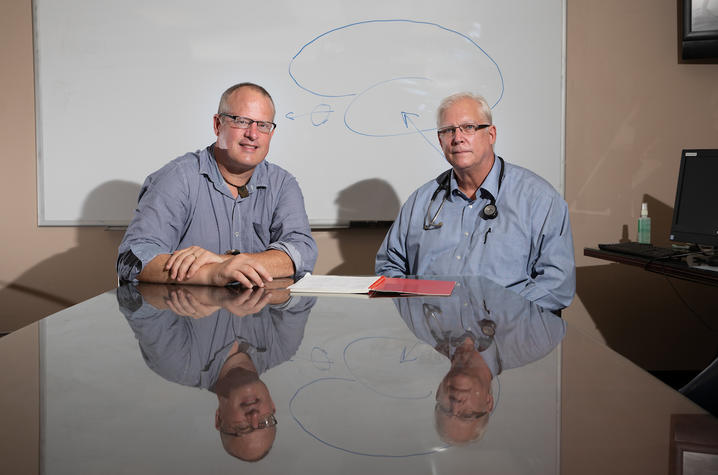New diagnostic criteria for LATE dementia offers hope for improved dementia care

LEXINGTON, Ky. (Jan. 17, 2025) — Researchers at the University of Kentucky’s Sanders-Brown Center on Aging are at the forefront of advancing dementia research with groundbreaking work on a condition known as LATE, or “limbic predominant age-related TDP-43 encephalopathy.”
Affecting more than one-third of individuals aged 85 and older, LATE often mimics Alzheimer’s disease, contributing to memory loss and dementia. Now, new clinical diagnostic criteria for LATE aims to transform patient care and accelerate the development of effective treatments. The diagnostic guidelines were recently published in Alzheimer’s & Dementia: The Journal of the Alzheimer’s Association.
“LATE is an impactful disease that is all too common in older adults,” says Pete Nelson, M.D., Ph.D., neuropathologist and the R.C. Durr Foundation Chair in Alzheimer’s Disease at UK. In 2019, Nelson and a large group of international experts worked together to name the new form of dementia now known as LATE.
“These guidelines represent a critical step forward, helping to distinguish LATE from Alzheimer’s disease and ensuring patients receive the most appropriate care,” said Nelson.
UK has made key contributions to LATE research, including being home to the world’s only clinical trial of a drug targeting LATE led by the Sanders-Brown’s director of clinical trials Greg Jicha, M.D., Ph.D., the Robert T. & Nyles Y. McCowan Endowed Chair in Alzheimer’s Research.
“This work is a testament to the importance of precision in dementia diagnosis. With these new criteria, we are not only addressing a critical gap in identifying LATE but also empowering clinicians and researchers to provide more targeted care and advance the search for effective treatments,” said Jicha.
The work surrounding LATE exemplifies the center’s leadership in both laboratory discoveries and clinical applications.
“This is truly a bench-to-bedside effort, with the potential to bring real hope to patients and families affected by dementia,” Nelson said.
The new diagnostic framework, developed by an international team of experts including Nelson and Jicha, lays the groundwork for more precise identification of LATE during a patient’s lifetime. This distinction is essential as treatments for Alzheimer’s disease become increasingly tailored to specific disease mechanisms. Misdiagnosing LATE as Alzheimer’s could mean patients miss out on the most effective therapies.
Memory loss and hippocampal atrophy — shrinking of the brain’s memory center — are hallmark symptoms of LATE. The new criteria specify how imaging and other diagnostic tools can be used to distinguish LATE from Alzheimer’s and other forms of dementia.
“These advancements are essential not only for better diagnosing LATE but also for understanding how it interacts with other brain diseases, including Alzheimer’s,” adds Nelson. “Correct diagnoses will help us better tailor treatments, improving outcomes for patients now and paving the way for novel therapies.”
As the state’s flagship, land-grant institution, the University of Kentucky exists to advance the Commonwealth. We do that by preparing the next generation of leaders — placing students at the heart of everything we do — and transforming the lives of Kentuckians through education, research and creative work, service and health care. We pride ourselves on being a catalyst for breakthroughs and a force for healing, a place where ingenuity unfolds. It's all made possible by our people — visionaries, disruptors and pioneers — who make up 200 academic programs, a $476.5 million research and development enterprise and a world-class medical center, all on one campus.




